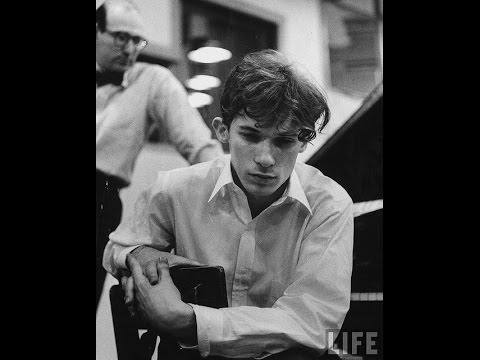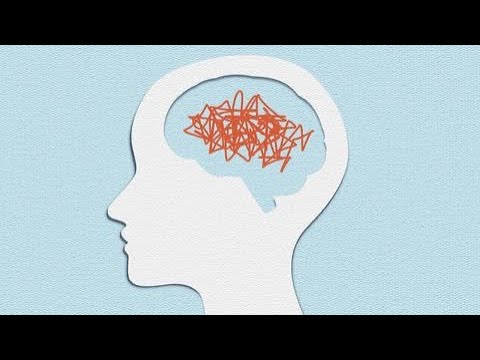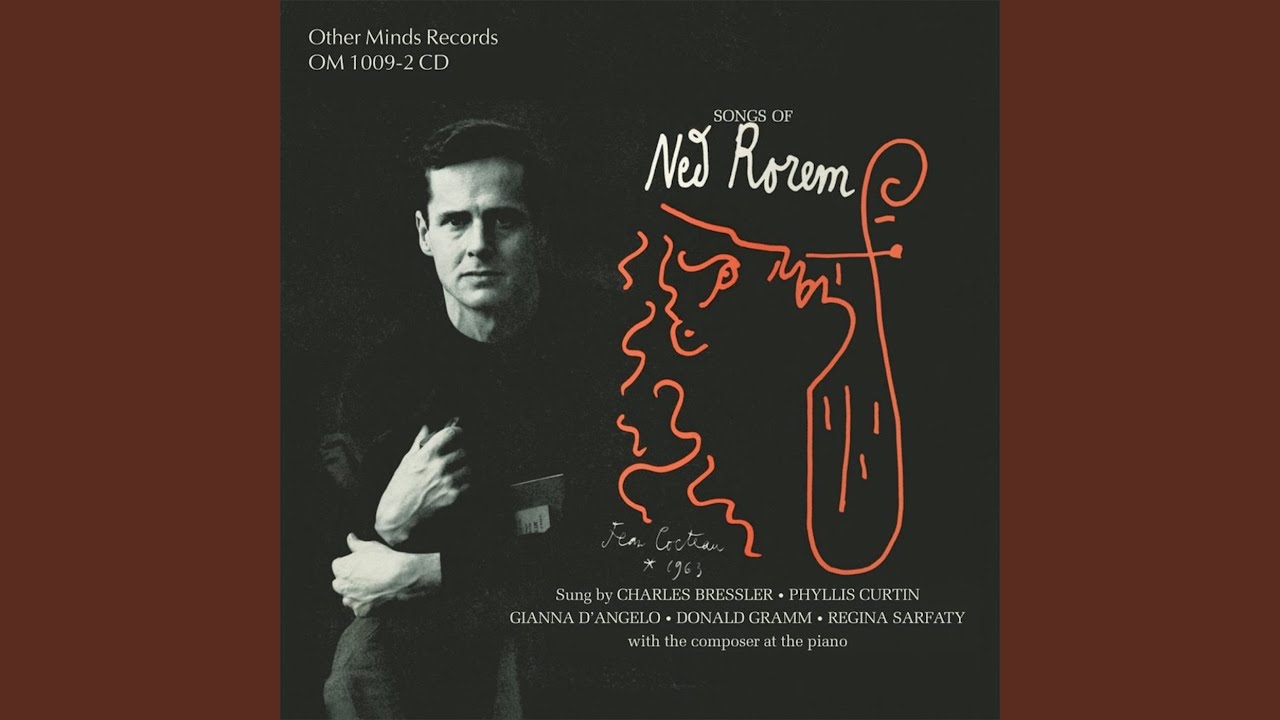Ok the dead are done with, but Sare is as alive now as he has always been.
The point is the imprinted message which come through regardless of if it is intended or otherwise determined, by a source outside or inside the cranium, if in fact it is from the outside, that could make a difference.
To repeat, the Turn, the eye and the look are resources correspindingly.
Particularly as autism, schizotypal disassociation and alternation in vision may be approached, deferential to a schema beyond the good(progressive) and bad (regressive architecture of what has been upheld as Aristoteles’ soul with that of Plato .
This is such a confused prefiguration coming from a novice , that certainly such could be dismissed , if it did not align the autistic-artificial continuum.
—
THE DECONSTRUCTION OF THE SELF: EGO AND “EGOLESSNESS” IN BUDDHIST INSIGHT MEDITATION
Mark Epstein
New York, New York
One of the casualties of the twentieth century introduction of Eastern contemplative traditions to the West has been the misappropriation of Freudian terminology by scholars and practitioners of these Eastern traditions. Nowhere is this more evident than in the confused use of the concepts “ego” and “egolessness” by psychologists of the meditative experience (Engler, 1986, p. 18). “Ego” has become variously equated with the rational mind, the self-concept, or the experience of individuality and has informally come to represent all that must be let go of in the process of meditation. “Egolessness” has become an acceptable aspiration of those practicing medita- tion; yet, more often than not, this goal is understood from a Western psychological perspective, rather than with the more subtle, originally intended Eastern meaning. The word used in translation, “egolessness,” has brought with it connotations of an upsurge in primary process thinking and id-dominated intrapsychic forces (Meissner, 1984, p. 229) that are often mistakenly embraced by Western practitioners eager to jettison their egos. As a result, concepts that include the Buddhist “anatman” (no-self) doctrine and the psychodynamic “ego” are often understood only superficially, hampering dialogue and understanding between the two traditions.
The fate of the ego in Buddhist meditation, in fact, has not been clearly delineated in Western psychological terms. The ten- dency of contemporary theorists has been to propose develop- mental schema in which meditation systems develop “beyond the ego’” (Walsh & Vaughan, 1980), yet this approach has ignored aspects of the ego which are not abandoned and which are, in fact, developed through meditation practice itself.
Copyright © 1988 Transpersonallnstitute
various
uses of the Freudian terms
“ego”
and “ego/essness”
The Journal o f Transpersonal Psychology, 1988, Vol. 20. No. I 61
the “experience of I” within m(!ditation
Familiarity with the current ego psychological-object relations view of the ego reveals that meditation can be seen as operating in different ways on many distinctive facets of the ego, promot- ing change and development within the ego, rather than beyond it. This view requires that the ego be understood as a complex and sophisticated matrix of structures, functions and representations, rather than as a single entity that could be readily abandoned. It recognizes the indispensability of the ego while at the same time revealing how meditation practice can uniquely modify it, producing an ego no longer obsessed with its own solidity.
Buddhist meditation systems that stress the development of mindfulness and the cultivation of insight (vipassana) spe- cifically focus on the “experience of I” within the meditation. The “I” which is investigated is that which is felt to be “permanent, unitary, and under its own power” (Gyatso, 1984, p. 162) or which seems to have its own “substantially existent or self-sufficient entity” (ibid). It is the “independent I under its own power” (ibid, p. 163) that is revealed through meditation to be lacking in “inherent existence” (Hopkins, 1984, p. 141) and “merely designated in dependence upon the aggregates of mind and body” (Gyatso, 1984, p. 163). Thus, in accordance with a modern object relations view of the self-concept as a “fused and confused . . . constantly changing series of self- images” (Jacobsen, 1964, p. 20), the “I” experience is revealed to be a constantly changing impersonal process, increasingly insubstantial the more carefully it is examined. As a result, the self-concept that was once experienced as solid, cohesive and real (see Guenther, 1974, p. 139) becomes increasingly differ- entiated, fragmented, elusive and ultimately transparent. This is the cardinal concept of “anatman,” “the idea of persisting individual nature” (ibid, p. 207) that is destroyed through meditative insight.
It is this realization that is at the core of what has conven- tionally become known as “egolessness” and it is clear that such an understanding is not one that is easily reconciled with Western psychoanalytic notions ofthe personality (Goleman & Epstein, 1981). Yet to conceive of this understanding as equivalent to “moving beyond” the ego is to ignore much of what years of exploration of the ego has revealed. This e~plorationhas mapped the structure and functions of the ego sufficiently that the changes in the “experience of I” enumer- ated within the Theravadin Buddhist system can, in fact, be explained within the psychoanalytic framework of the ego.
As can be seen from Figure 1, psychoanalytic understanding of the ego has fleshed out much of Freud’s original formulations,
62
The Journal of Transpersonal Psychology, 1988, Vol, 20, No, 1
.--------;;::::::;— ’
FIGURE I SYSTEM EGO
FUNCTIONAL
------------…
Reality~
(Hartmann)
Reality testing
Reality mastery Adaptation Conflict-free ego sphere
Defensive (A. Freud)
Inhibiting
Continuous experience Ego feeling (Federn) “Erlebnis” (Wittels)
Autonomous-not derived from instinctual drives
Mediator (Freud)
Drive regulation Mental conflict Supervisor
Postpones and controls
discharges of excitations
into external world Masters tensions
Synthetic (Nunberg)
Organ of equilibrium Coordinating
Integrating
Continually re-establishes
contact
Multiple internalized
representation of significant others
TIONAL
REPRESENT A
-----~–~
Object representations
…
Self-representations
~ ~ --…
“I” experience Multiple other
self-representations
Abstraction
Mental content “Self-representation as agent” (Rothstein)
…—~
The ego is now understood in representational (Rothstein, 1981) as well as functional terms, with the former stressing the process by which a picture of the self and world is built up out of multiple mental images, constructs or “representations,” and
the latter stressing the various roles or functions that the ego ego
plays within the psychic economy in maintaining psychic in
equilibrium and facilitating adaptation and growth. Ego func~ representational tions are thus to be distinguished from the “self” and the “self- and representation” (Stolorow, 1975, p. 180), and the ego is seen as
a system composed of structures and sub-structures which can terms
be in collaboration or conflict (Hartmann, 1939, 1950). Roth-
stein (1981) integrated this formulation with those of post~
Freudian elaborators of object-relations theory by conceptu-
alizing “the representational world as a substructure of the ego
of equal importance to the substructure ot ego functions and
importantly related to them” (Rothstein, 1981, p. 440).
Thus, the often referred to notion of Freud’s (1923) that the ego is that which “masters the tensions,” “controls instincts,” “regulates the drives” or “postpones and controls the discharges of excitations into the external world” becomes but one of the substructures of ego function. This is the classic view ofthe ego as supervisor of “aU its own constituent processes” (ibid) or as mediator between demands of id and super-ego or id and environment. Other important functions, elaborated soon
functional
The Deconstruction o f the Self: Ego and “Egolessness” in Buddhist Insight Meditation 63
representational component complements functional view
thereafter, include those of defense or inhibition (A. Freud, 1937), adaptation or reality mastery (Hartmann, 1939, 1950), and, most significantly for this discussion, that of synthesis.
This synthetic function acts as an “organ of equilibrium” within the internal world, promoting integration and organization of diverse and conflicting inputs and components (Nunberg, 1955). As Freud, himself, made clear, it is opposed to the function of repression (Freud, 1925) which splits off and isolates conflicted material from awareness. Its role is to assimilate the products of an ever-fluctuating and increasingly differentiated psyche, without rejection, facilitating a stable and coherent (Nunberg, 1955, p. 153) experience. “The ego mediates, unifies, integrates because it is of its essence to maintain, on more and mOre complex levels of differentiation and objectivation of reality, the original unity” (Loewald, 1951, p. 14).
The representational component of the ego complements the functional view by stressing the “conglomerate of pre-individ- uated impressions” (Rothstein, 1981, p. 440) that pattern into mental images of the self. It is through the development of the representational dimension that the individual’s coherent self- experience is built up, contributing to the creation of a sense of a solid “I.” The means by which this occurs has been the SUbject of debate within analytic circles for years, with some asserting that the “I” is experienced affectively (viscerally) and other cognitively (as an abstraction). Federn, for example, spoke of “ego feeling” as the “sensation, constantly present, of one’s own person” (Federn, 1952, p. 60) and insisted that it was a “continuous experience” rather than a “conceptual abstraction” (p. 283). Wittels (1949) also spoke of the ego as “a direct inner experience” (p. 54) and, by attaching the Germanic concept of “Erlebnis,” tried to connote the inner reverberations of being that are interpreted as “I.” While not rejecting the role of the affective experience, Rothstein (l981) also emphasized the manner in which “I” may become a belief or abstraction. From an abstract perspective, Rothstein conceptualized the “I” ex- perience as a content of the ego, which he designated as “the self-representation as agent” (ibid, p. 440).
Thus, the “I” is not identical with the ego but is more precisely a component. It is described as a self-representation as agent because it sees itself as the one capable of activity. It “conceives of itself as existing actively to pursue and insure its well-being and survival” (ibid, p. 440). It is an idea, an abstraction, contained within the ego, that embodies the ego’s sense ofitself as solid and real. It is not, however, to be confused with the entire ego. Developed out of the ego’s continuing sensation of
64
The Journal of Transpersonal Psychology, 1988, Vol. 20, No.1
itself, it remains, nevertheless, at base a concept that the person holds dear.
At the core of the self~representationas agent lies the narcissis- tically invested ideal ego (Epstein, 1986), “an idea which the ego has of itself” as perfect and inviolable (Hanly, 1984). The ideal ego involves a sense of inherent perfection, a “state of being” equivalent to the Tibetan description of the “independent I under its own power.” It is an ideal that is not recognized as such, but is, instead, deeply felt to be real, denying all transience, insignificance and mortality.
Meditation systems, then, that develop the factors of mindful- ness and insight, focus particularly on the “ego feeling” of an “independent I.” While concentration practices can temporarily suspend ego boundaries and provide a deep sense of ontologi- cal security through the merger of ego and ego ideal (Epstein, 1986), insight practices operate within the ego system itself. Attending to both the subjective intimation ofthe experiencing I and to the abstract cognitions that form it on a conceptual level, insight practices seek to uncover the elementary particles of the “I” experience. This occurs through a definite sequence of events that profoundly alters the structure of the ego.
As meditation develops, the various self·representations first come into and out of focus. These include those that have served as “the repository and container of various fears concerning oneself” (Joseph, 1987, p. 14) and those which have become “narcissistically and I or masochistically invested” (Rothstein, 1981, p. 441). Exposure of these representations through the non-judgmental light of mindfulness permits a simultaneous dis-identification from and integration of self- images that have often been unquestioned assumptions or split off rejections. As meditation deepens, the representational nature of the grosser self-concepts becomes clear, but a more subtle and pervasive tendency to identify with experience persists. This tendency to identify surfaces most often as a resistance to mindfulness [“This is mine, this is I, this is my self” (Nyanamoli, 1975, p. 743)] and is attended to just as are resistances in psychoanalysis which mask unconscious material. In this manner, the “experience of I” is ultimately de-con- structed (Engler, 1983) in terms synonymous with what is implied by the self-representation as agent, as an image, abstraction or simulacrum. The ability of the ideal ego to “influence the ego’s self-observing activities even to the extent of causing the ego to deny its own nature” (Hanly, 1984, p. 260) is finally extinguished. The self is not eliminated, it is revealed to be what it has always been. "Selflessness is not a case of something that existed in the past becoming non-existent;
effects
of meditation on
self-
rep resent at i o n
The Deconstruction o f the Self: Ego a n d " Ego lessness " in Buddhist Insight Meditation 65
66
The Journal of Transpersonal Psychology, 1988, Vol. 20, No.1
a “therapeutic split in the ego”
rather, this sort of “self” is something that never did exist. What is needed is to identify as non-existent something that always was non-existent. … " (Gyatso, 1984, p. 40).
What is unusual about the Buddhist view from an object relations perspective is the assertion that an individual could experience the pure representational process without becoming destabilized. Thus, while the uncovering of the self-representa- tion as agent is one major modification of the ego system produced by insight meditation, it is unlikely to be the only one. From the representational point of view this is clearly the major transformation. Yet from a functional perspective, a further compensatory modification is required in order for the requi- site stability to be conferred, stability that could only derive from the synthetic capacity of the ego.
The development of mindfulness, like that of evenly suspended attention (Epstein, 1984), involves a “therapeutic split in the ego” (Engler, 1983, p. 48; Sterba, 1934), in which the ego becomes both SUbject and object, observer and observed. This capacity for observing the dynamic flow of psychic events is very much a synthetic function, maintaining equilibrium in the face of incessant change. Just as the synthetic function of the ego is said to hold objective reality to itself, “detached from itself, before it, not in it” (Loewald, 1951, p. 18), so does mindfulness, in the traditional Buddhist psychological text, “guard and confront an objective field,” “steadying the object” and “keeping it immoveable” (Nyanamoli, 1974, p. 524). Mindfulness maintains a sense of connection within mind moments whose transience becomes increasingly evident as meditation progresses. “It should be regarded as like a pillar because it is firmly founded, or as like a door-keeper” (ibid, p. 524) because of the way in which it guards the mind and senSe~ doors in the face of change. Mindfulness allows each moment to be experienced in its entirety; it is synthetic because it binds awareness to the object, neither holding on to, nor rejecting, whatever projects itself in the mind.
This synthetic function of mindfulness recalls what one of Freud’s teachers (Pierre Janet, in 1903) referred to as the pinnacle of healthy mental functioning, the “synthetic opera- tion” of attention to “the formation in the mind ofthe present moment” that he termed “pre-sentification,” “the capacity for grasping reality to the maximum” (Ellenberger, 1970, p. 376). Janet understood that this capacity could be developed and that to do so contributed to the sense of psychological well- being. "The natural tendency of the mind is to roam through the past and the future; it requires a certain effort to keep one’s attention in the present, and still more to concentrate it on
the synthetic function
present action. ‘The real present for us is an act of a certain complexity which we grasp as one single state ofconsciousness in spite of this complexity, and in spite of its real duration. . . . Pre-senti fication consists of making present a state of mind and a group of phenomena’" (ibid).
Advanced stages of insight meditation involve profound ex- periences of dissolution and fragmentation, yet the practi- tioner, through the practice of “making present,” is able to withstand these psychic pressures. It is the ego, primarily through its synthetic function, that permits integration of the experience of disintegration. In true egolessness, there could be only disintegration, and such a state would manifest as psy- chosis. The ego system is certainly a target of these meditation practices, but what results is more properly conceived of as an intrasystemic (Hartmann, 1959; Rothstein, 1981) reequilibra- tion rather than a progression beyond an outmoded structure.
As the moment-to-moment nature of reality becomes more and more directly experienced, it is the synthetic function of the ego, as mindfulness, that must continuously re-establish con- tact with the object of awareness. “To maintain, or constantly re-establish, this unity . . . by integrating and synthesizing what seems to move further and further away from it and fall into more and more unconnected parts” (Loewald, 1951, p. 14) remains a function of the ego that is not obliterated through meditation but that becomes increasingly necessary as the self- representation as agent loses its authority. Through this relent- less exposure, insight meditation radically alters the experience of the representational world. What once seemed solid is now perceived at its quantum level, more differentiated and pat- terned, more highly complex and fragmentary, more discon- nected, and less coherent, real and inherently existent. As the representational aspect of the ego is decathected, there is a compensatory evolution of the functional component, such that the higher order of differentiation can be integrated. “Conscious reflection,” argues Loewa1d (1978), is necessary for the development of the ego, for the attainment of a “higher organization of psychic processes” (Joseph, 1987). The Budd- hist texts agree. Mindfulness, the vehicle of conscious reflec- tion, of “remembering and not forgetting” (Nyanamoli, 1975, p. 524), leads to insight into the differentiated nature of the psyche and propels the development of the synthetic aspect of the ego, preserving, on a moment-to-moment basis, the inte-
grity of a more highly complex psyche.
Thus, mindfulness is not a means of forgetting the ego; it is a method of using the ego to observe its own manifestations. Development of the capacity to attend to the moment-to~
the
ego permits integration
mindfulness and a
more
highly complex psyche
The Deconstruction o f the Self; Ego and “Egolessness” in Buddhist Insight Meditation 67
the enlightened ego abides
moment nature of the mind allows the representational nature of the self to be experienced without the distortions of idealiza- tion, thereby promoting a change within the ego system different from that envisioned by most Western personality theory. Rather than encouraging a consolidated ego sure of its own solidity, the Buddhist approach envisions a more fluid ego able to constantly integrate potentially destabilizing experi- ences of insubstantiality and impermanence. From this per- spective the great promise of the Buddhist psychologies can be fully appreciated. The enlightened ego abides, but in a form which sustains the realization of impersonality. As the Dalai Lama has expressed it, “This seemingly solid, concrete, inde- pendent, self-instituting I under its own power that appears actually does not exist at all” (Gya180, 1984, p. 70).
REFERENCES
ELLENBERGER, H. (1970). The discovery of the unconscious. New York: Basic Books.
ENGLER, J. (1983). Vicissitudes of the self according to psychoanaly- sis and Buddhism: A spectrum model of object relations develop· ment. Psychoanalysis and Contemporary Thought, 6: I, 29-72.
ENGLER, J. (1986). Therapeutic aims in psychotherapy and medita- tion. In K. Wilber, J. Engler, & D.P. Brown, Transformations of consciousness. Boston: New Science Library.
EpSTEIN, M. (1984). On the neglect of evenly suspended attention. Journal of Transpersonal Psycho., 16, 2, 193-205.
EpSTEIN. M. (1986). Meditative transformations of narcissism. Journal of Transpersonal Psychol., 18, 2, 143-158,
FEDERN, P, (1952). Ego psychology and the psychoses. New York: Basic Books.
FREUD,A.(1937). Theegoandthemechanismsofdefense.NewYork: lnt. Vniv. Press.
FREUD, S. (1923). The ego and the id. New York: Norton.
FREUD, S. (1926). The question of lay analysis. S.E. XX, London:
Hogarth Press, 1955, 179-258.
GOLEMAN, D. & EpSTEIN, M. (1983). Meditation and well-being: An
Eastern model of psychological health. In R. Walsh and D. H. Shapiro, Beyond health and normality, New York: Van Nostrand Reinhold.
GUENTHER, H. V. (1974). Philosophy and psychology in the Abhi- dharma. Berkeley: Shambhala.
GVATSO, T. (1984). Kindness, clarity. and insight. Ithaca: Snow Lion. HANLV, C. (1984). Ego ideal and ideal ego. Int. J. Psycho-Analy.,
65: 253-61.
HARTMANN, H. (1939). Ego psychology and the problem o f adapta-
tion, New York: Int. Univ. Press.
HARTMANN, H. (1950). Comments on the psychoanalytic theory of
the ego. Psycho-Anal. Study Chi/d. 5: 74-96.
68
The Journal of Transpersonal Psychology, 1988. Vol. 20, No.1
HOPKINS, J. (1984). The tantric distinction. London: Wisdom Pub- lications.
JACOBSEN, E. (1964). The self and the object world. New York: Int. Univ. Press.
JOSEPH, E. J. (1987). The consciousness of being conscious. J. Am. Psychoanal. Ass.• 35: I, 5-22.
LOEWALD, H. W. (1951). Ego and reality. Int. J. Psycho-Anal. 32: 10-18.
LOEWALD, H. W. (1978). Instinct theory, object relations, and psy- chic structure formation. J. Amer. Psychoanaly. Assn., 26:453-506. MEISSNER, W. W. (1984). Psychoanalysis and religious experience.
New Haven: Yale University Press.
NUN8ERG, H. (1955). Principles ofpsychoanalysis. New York: Int.
Univ. Press.
NYANAMOLI, B. (Transl.) (1976). Visuddhimagga: The path afpuri-
fication, by Buddhaghosa, 2 vol. Boulder: Shambhala. ROTHSTEIN, A. (l981). The ego: An evolving construct. Int. J. Psy-
cho-Anal. 62: 435-45.
STERBA, R. F. (1934). The fate ofthe ego in analytic therapy. Int. J.
Psycho-Anal. 15: 117-126.
STOLOROW, R. D. (1975). Toward a functional definition of narcissism.
Int. J. Psycho-Analy. 56: 179-185.
WALSH, R. H. & VAUGHAN, F. (1980). Beyond ego. Los Angeles:
Tarcher.
WITTELS, F. (1949). A neglected boundary of psychoanalysis. Psy-
choanl. Quart. 18: 44-59.
Requests for reprints to Mark Epstein, M.D. 52 White Street, New York, NY
10013.
The Deconstruction o f the Self: Ego and “Egolessness” in Buddhist Insight Meditation’
———————-/-//////////////////
The particular generally defined gaps existing between Eastern and Western sources, may bring Sartre’s nauseous self thought man ‘s quandary, into a recollectable as-hoc fast track mode of apprehension, that self learning in Sartre’s time was way more intuitive then as it is now, and this same stream has continued to evolve it’s embedded slate today. (M.Polanyi)
Schopenhauer’s representation of the will, turned Eastward, , Niet
‘








